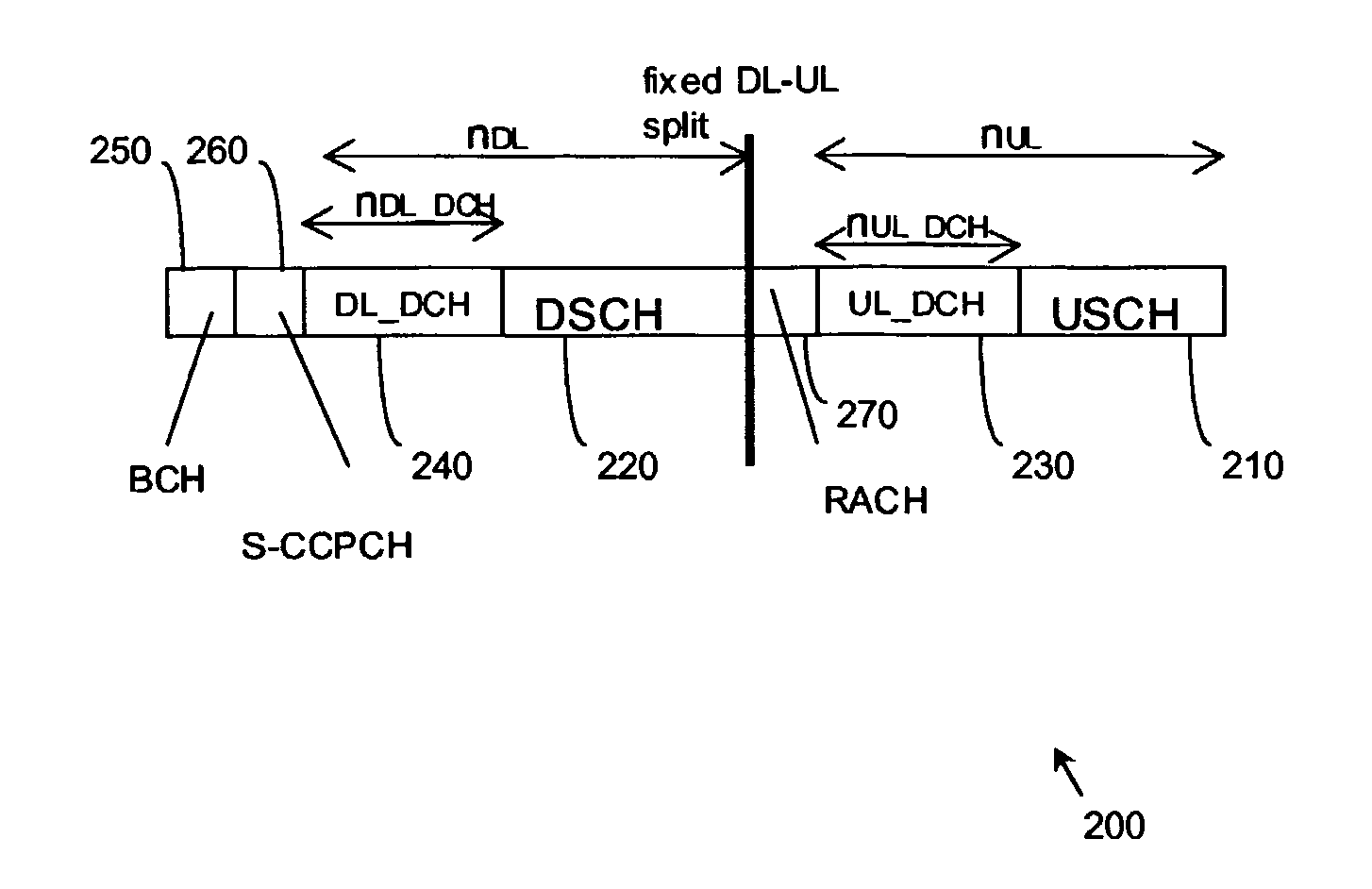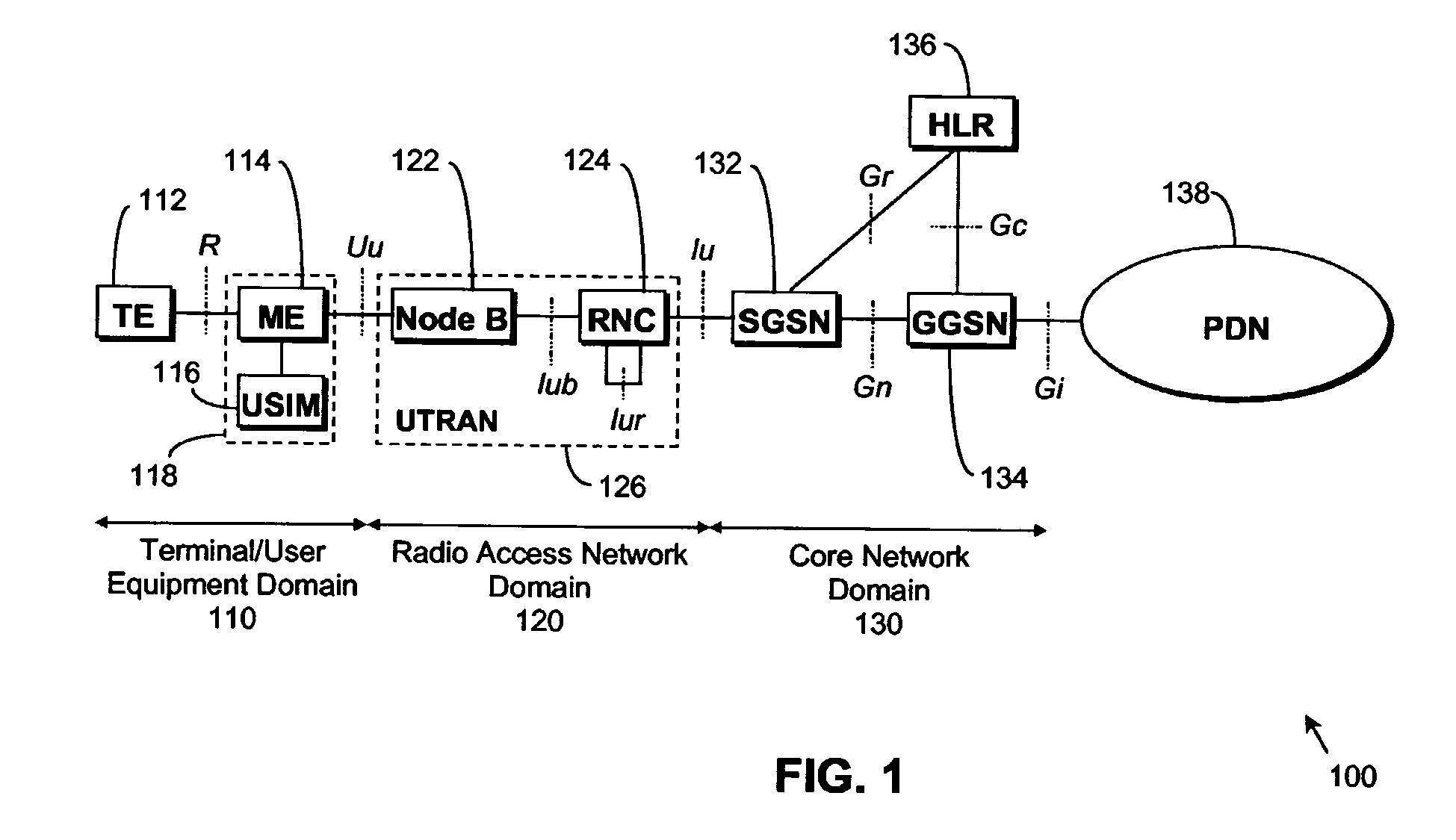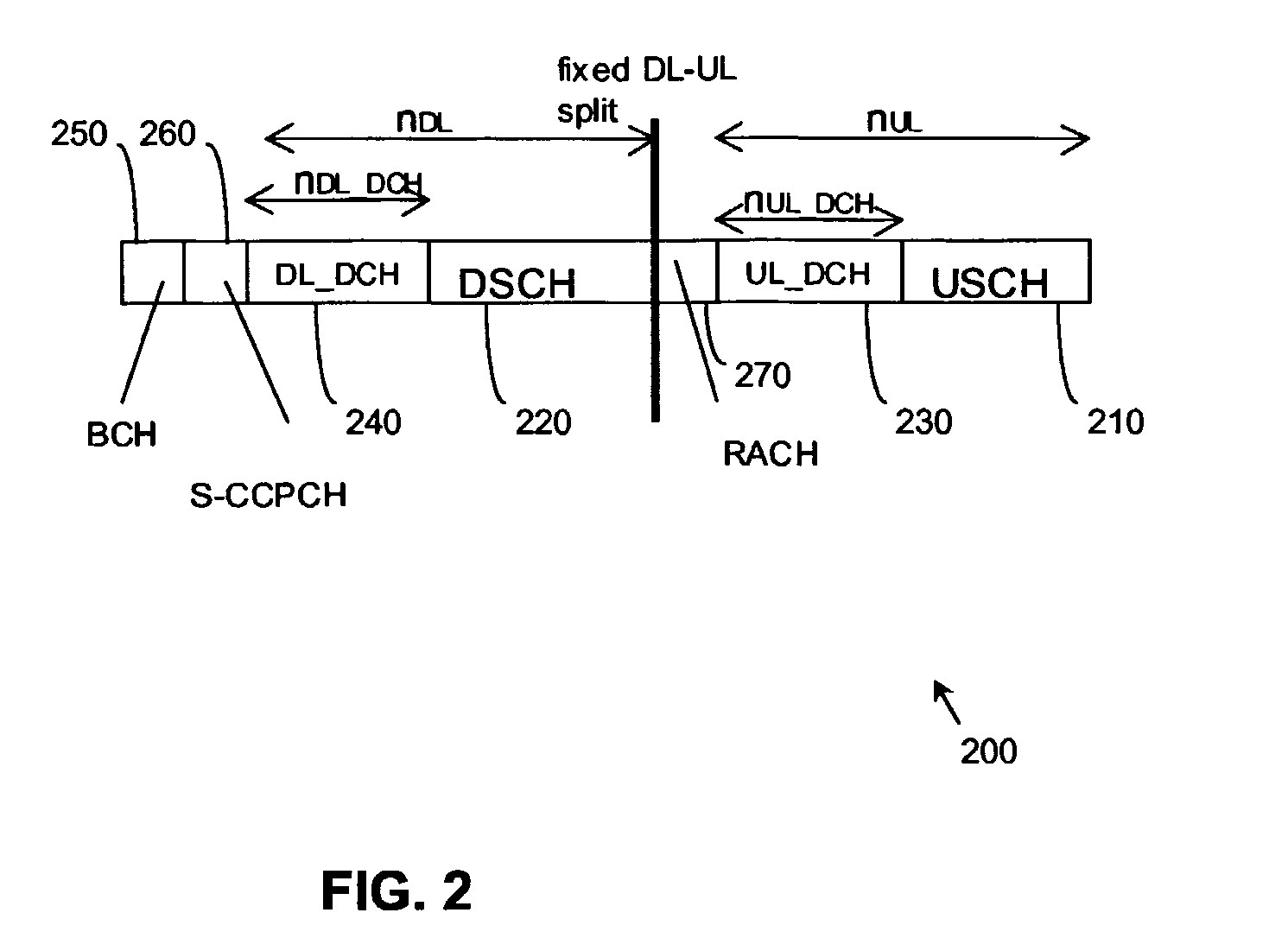Method and Arrangement for Allocating a Dedicated Channel in a Cellular Communication System
- Summary
- Abstract
- Description
- Claims
- Application Information
AI Technical Summary
Benefits of technology
Problems solved by technology
Method used
Image
Examples
Embodiment Construction
)
[0062] The following preferred embodiment of the present invention will be described in the context of a UMTS Radio Access Network (UTRAN) system operating in TDD mode. However, it will be appreciated that the invention is applicable to many other communication systems.
[0063] Referring firstly to FIG. 1, a typical, standard UMTS Radio Access Network (UTRAN) system 100 is conveniently considered as comprising: a terminal / user equipment domain 110; a UMTS Terrestrial Radio Access Network domain 120; and a Core Network domain 130.
[0064] In the terminal / user equipment domain 110, terminal equipment (TE) 112 is connected to mobile equipment (ME) 114 via the wired or wireless R interface. The ME 114 is also connected to a user service identity module (USIM) 116; the ME 114 and the USIM 116 together are considered as a user equipment (UE) 118. The UE 118 communicates data with a Node B (base station) 122 in the radio access network domain 120 via the wireless Uu interface. Within the ra...
PUM
 Login to View More
Login to View More Abstract
Description
Claims
Application Information
 Login to View More
Login to View More - R&D
- Intellectual Property
- Life Sciences
- Materials
- Tech Scout
- Unparalleled Data Quality
- Higher Quality Content
- 60% Fewer Hallucinations
Browse by: Latest US Patents, China's latest patents, Technical Efficacy Thesaurus, Application Domain, Technology Topic, Popular Technical Reports.
© 2025 PatSnap. All rights reserved.Legal|Privacy policy|Modern Slavery Act Transparency Statement|Sitemap|About US| Contact US: help@patsnap.com



